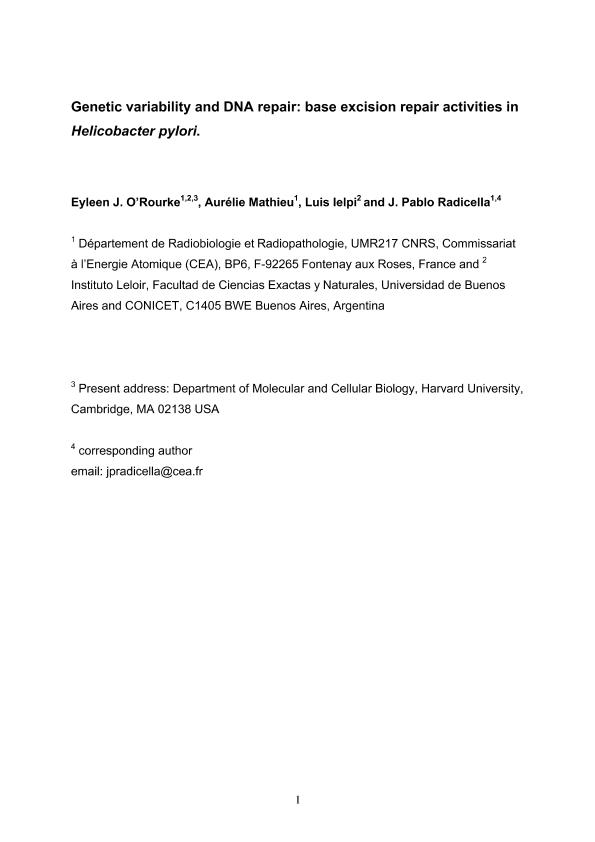Artículo
Genetic variability and DNA repair: base excision repair activities in Helicobacter pylori .
Fecha de publicación:
03/2003
Editorial:
American Scientific Publishers
Revista:
Genome Letters
ISSN:
1537-3053
e-ISSN:
1537-3053
Idioma:
Inglés
Tipo de recurso:
Artículo publicado
Clasificación temática:
Resumen
One of the remarkable characteristics of Helicobacter pylori is the high genetic diversity it displays. Based on the genome sequencing results, the absence of certain DNA repair activities has been postulated to be one of the causes for the genetic variability of this pathogen. We explored the possible base excision repair (BER) pathways present in H. pylori. We analyzed the activities corresponding to the enzymes participating in the first two steps of the pathway, the DNA glycosylases, specific for each kind of base damage, and the endonuclease that cleaves the resulting abasic (AP) site. We review here the data on the repair of alkylating DNA damage and oxidized pyrimidines and present results on studies carried out on bacterial extracts and purified proteins for the other BER activities. The combined approaches allowed the identification of a 3-methyl adenine DNA glycosylase, an endonuclease III, a uracil glycosylase, an adenine DNA glycosylase specific for 8-oxoguanine/adenine base pairs, and an AP endonuclease activity. We also discuss the possible role of the host in the bacterial genetic variability and the potential appearance of new alleles that could influence H. pylori persistence.
Archivos asociados
Licencia
Identificadores
Colecciones
Articulos(IIBBA)
Articulos de INST.DE INVEST.BIOQUIMICAS DE BS.AS(I)
Articulos de INST.DE INVEST.BIOQUIMICAS DE BS.AS(I)
Citación
O'Rourke, Eyleen J.; Mathieu, Aurelie; Ielpi, Luis; Radicella, Juan Pablo; Genetic variability and DNA repair: base excision repair activities in Helicobacter pylori
.; American Scientific Publishers; Genome Letters; 2; 1-2; 3-2003; 41-47
Compartir




